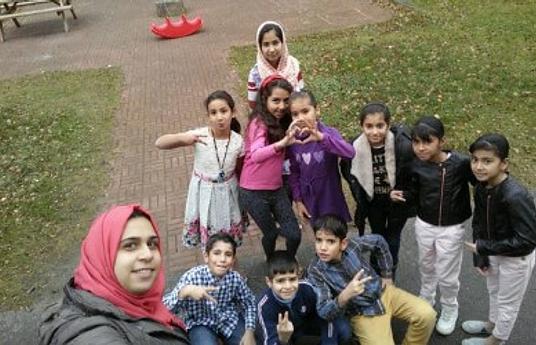Why is entrepreneurship education important, especially today? The labor market is shifting to more project-oriented and fractured jobs and an entrepreneurial mindset is becoming imperative even in the traditional working life.
Entrepreneurship education at school aims to produce learners of all ages who are self-sufficient, independent, goal-oriented and team-players. The innovation also creates the foundation for entrepreneurial culture to flourish. In collaborations between schools and businesses, the role of the school or institute is to provide education and guidance as well as transversal and impartial information and skills.
It is important that people begin to view collaboration between businesses and schools as an opportunity instead of an inconvenience. This does not exclude critical thinking but encourages openness and curiosity. The reformed Finnish national core curriculum contains some insight on how to build collaboration between schools and businesses.
One key is improving the school culture. Another factor is teacher participation as well as planning the actions of the educational institute and the curriculum. These aspects determine the quality and quantity of the entrepreneurship education provided. A teacher who can participate will use more variety in their teaching contents and methods than a colleague who has not participated in the planning process. Schools should encourage teachers to take part in the planning process of working life collaboration.
Teacher participation in entrepreneurship education training and orientation has proved to be the greatest factor for starting business collaboration. Another key is active communication. The businesses should contact the schools often. You can also apply a broad resource approach: Could new methods gained from joint productions and sharing, bringing pensioners and parents into school activities or breaking strict regulations introduce new perspectives to the collaboration?
One of the objectives for the reformed national core curriculum for basic education is to transform the methods for teaching and learning. This also transforms teachers' duties. Teachers can allow students to take an active role in the collaboration if it's planned studiously and carefully. This, in turn, allows teachers to take a step back and focus on encouraging and guiding.
Successful entrepreneurship education also requires active leadership and support. The principal's background and education color the school's entrepreneurship education, as well. Research has found that principals play an important part as educational leaders and they also serve as an example and gatekeepers to resources and partners. Principals require support to achieve all this. The big question is: How is entrepreneurship education lead in Finland or individual schools? Schools should invest in entrepreneurship education management and supporting principals to yield fruitful business collaboration.
Youth Academy researched collaboration between schools and businesses during the school year 2016–2017. They collected suitable examples from the project which are presented in the eight steps below. The report and examples aimed to produce new and innovative ways of collaboration between schools and businesses or communities. Another goal was to transform the society’s attitude so that collaboration between schools and businesses becomes more normalized and appealing.



